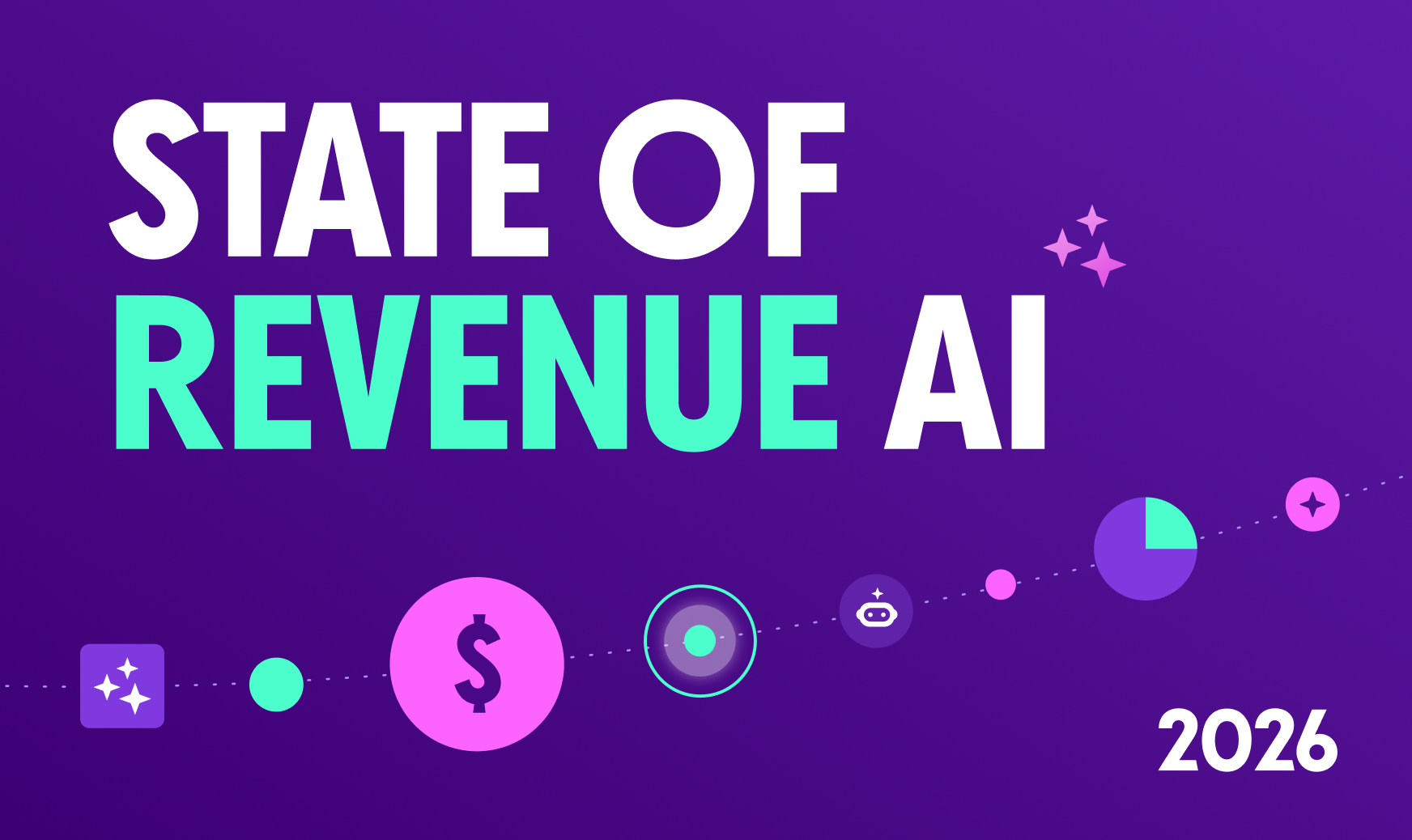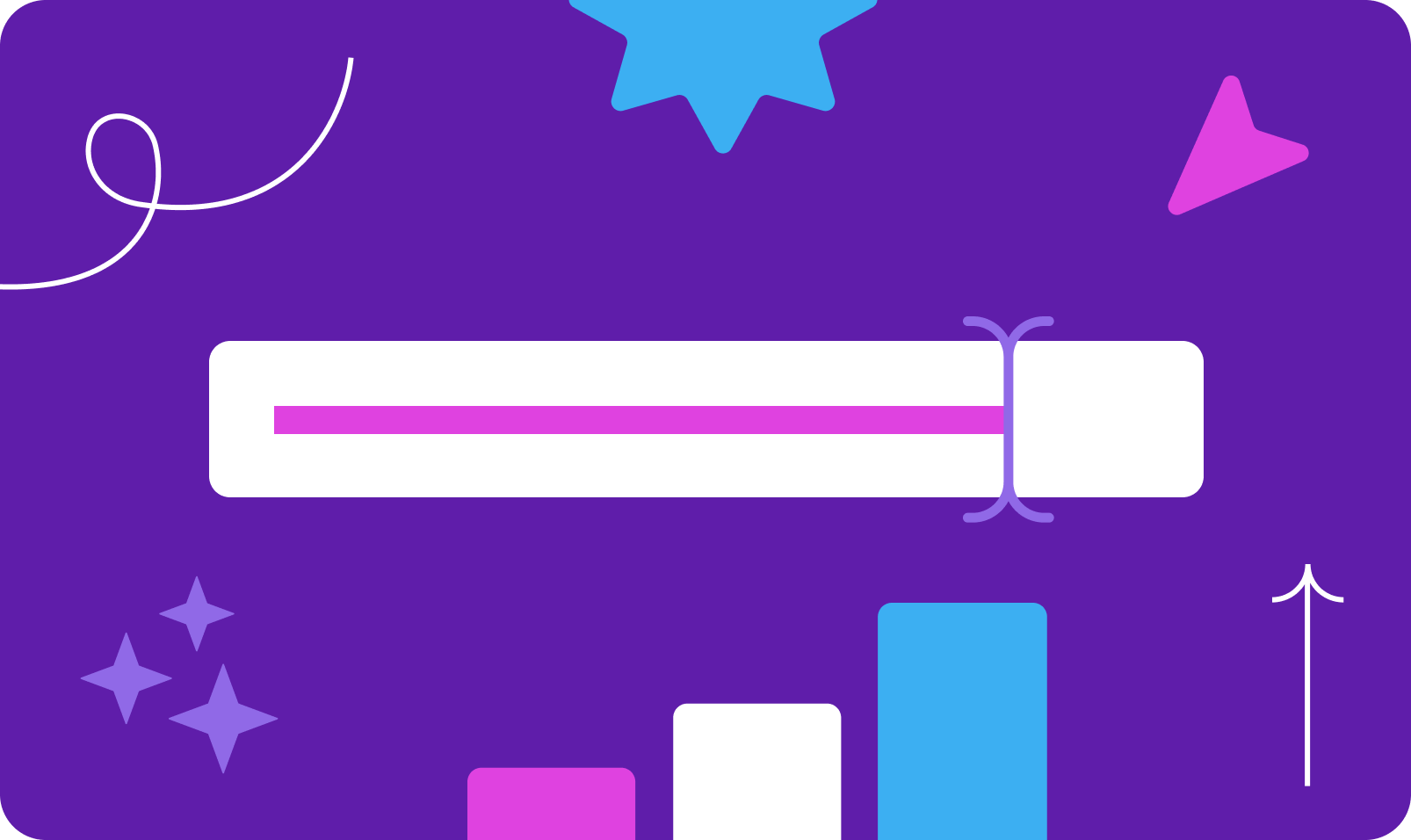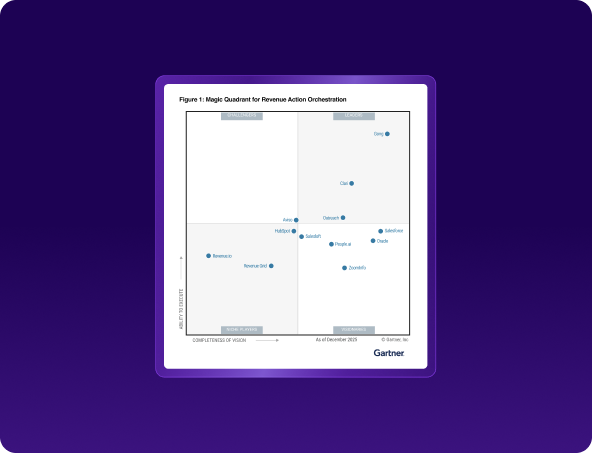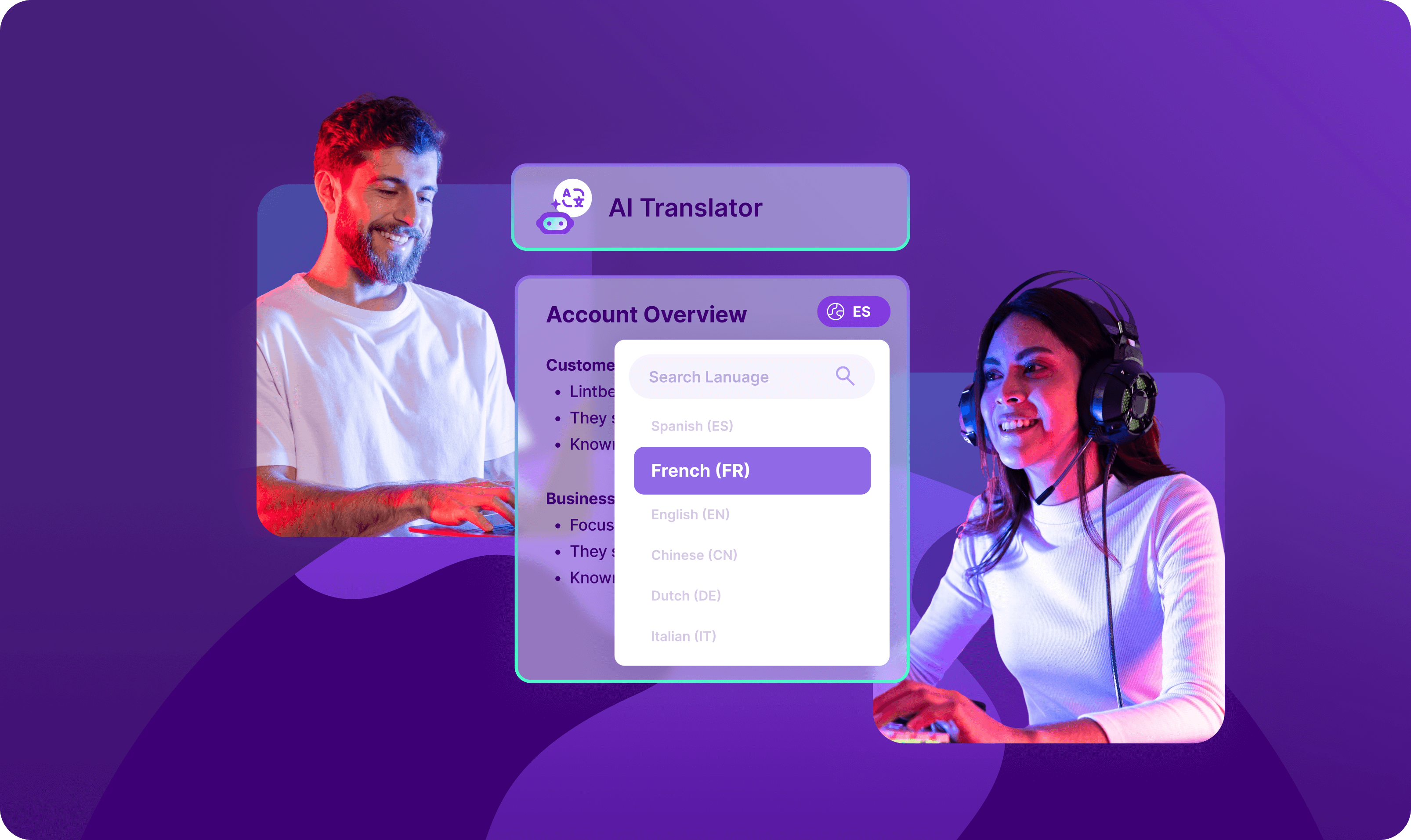Sales strategies
Elements of effective sales conversations

Chris Orlob
Content Author
Published on: February 5, 2018

Great sales conversations are what make your top-performing reps so good at selling. But not everyone understands that…
Lots of sales leaders believe that great sellers are either naturally talented or great at “one special move” that helps them win every time. Neither theory is true.
There’s only one thing dividing your A-players from their less successful peers: their sales conversations.
We used Gong’s AI-powered platform — with advanced visibility — to analyze more than 1 million sales calls. Below is what the best reps do again and again. (Lucky for you, all nine elements are trackable in Gong’s Revenue Intelligence Platform.)

1. Dictate the rhythm of your sales conversations

It’s common knowledge in the sales world that you should “mirror” your prospect — in other words, subtly imitate their way of speaking, tone, and body language to make yourself seem similar, and thus, more trustworthy. Yet, it turns out the most persuasive salespeople actually use the opposite approach. Rather than copying their prospects’ talking speed, they get the prospects to copy theirs. Gong’s conversation intelligence revealed that top salespeople get customers to adjust their rate of speech by 13% on average, all within the first three minutes of the call.

Average performers, on the other hand, adjust their speed by 7% to meet the prospect, while the prospect barely changes.
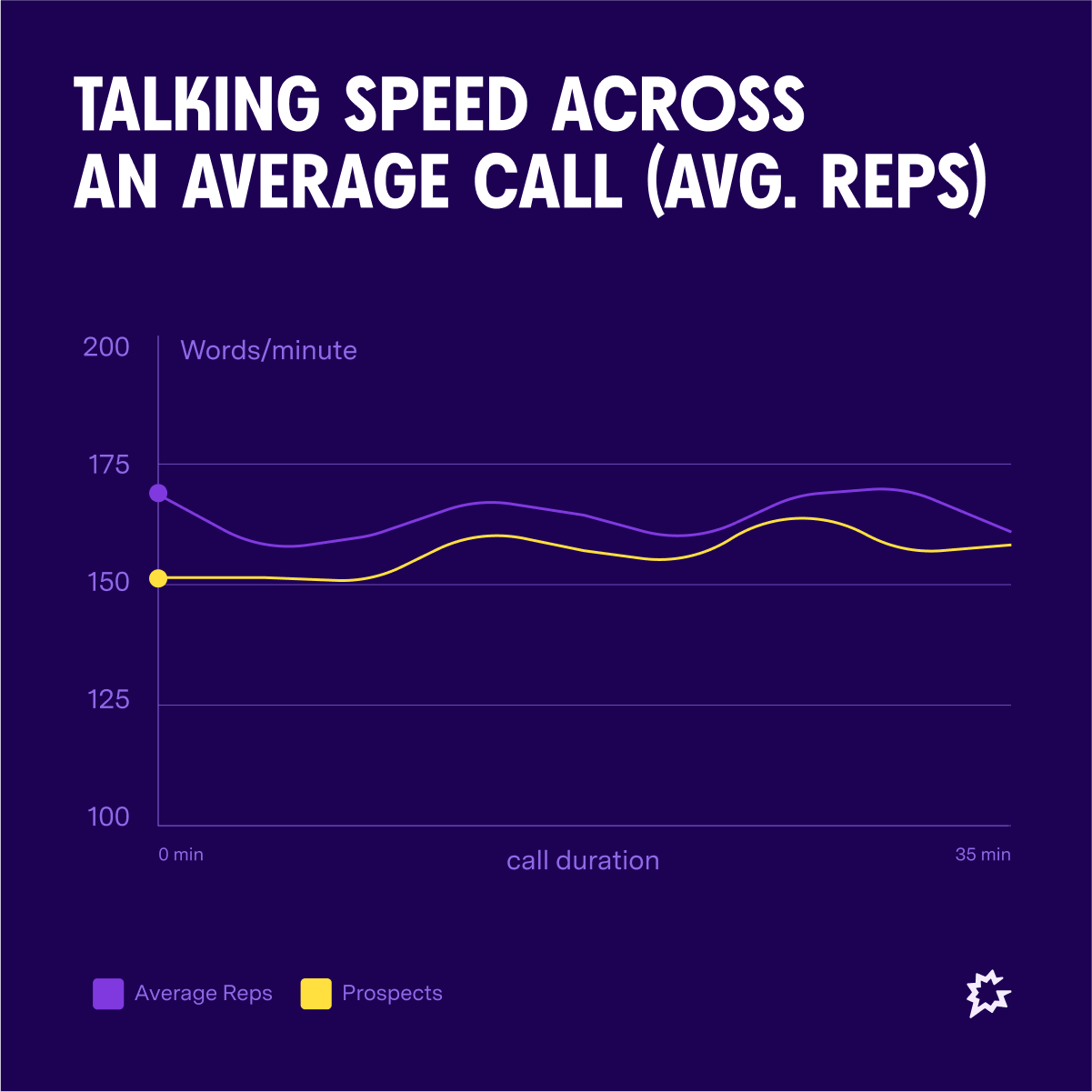
The same trend holds true for “sentiment” patterns (i.e., how positive or negative someone’s language is). Top reps don’t become more or less positive to match their prospect’s sentiment. On the contrary, their prospects become more or less positive to align with them. When reps discuss certain topics, it has a big impact on their win rates, especially when it comes to pricing. It’s one of the most loaded parts of the sales call. It turns out, star reps tend to bring up pricing around the same time: 38-46 minutes into the call.
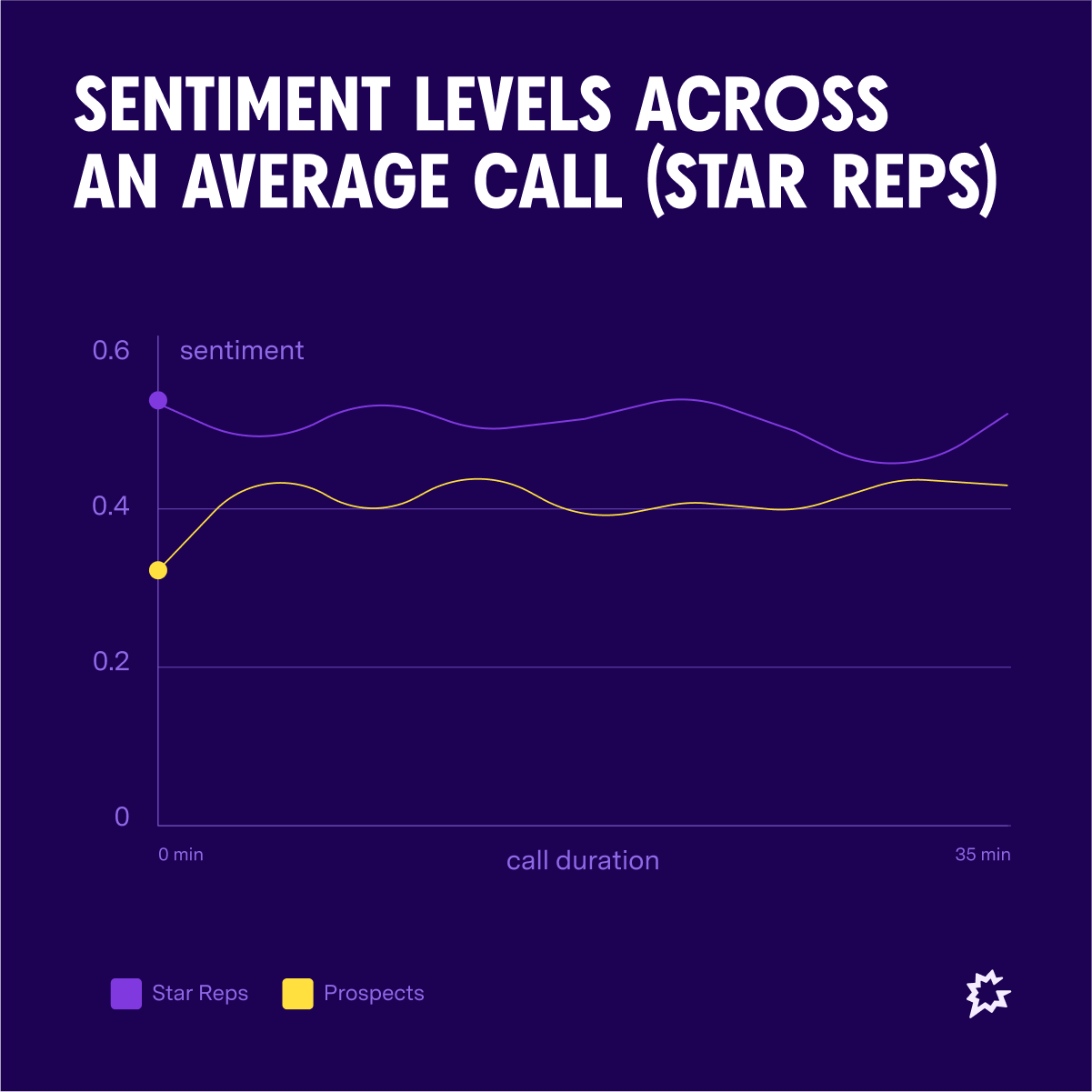
2. Dictate the agenda of your sales conversation
When reps discuss certain topics, it has a big impact on their win rates, especially when it comes to pricing. It’s one of the most loaded parts of the sales call. It turns out, star reps tend to bring up pricing around the same time: 38-46 minutes into the call.
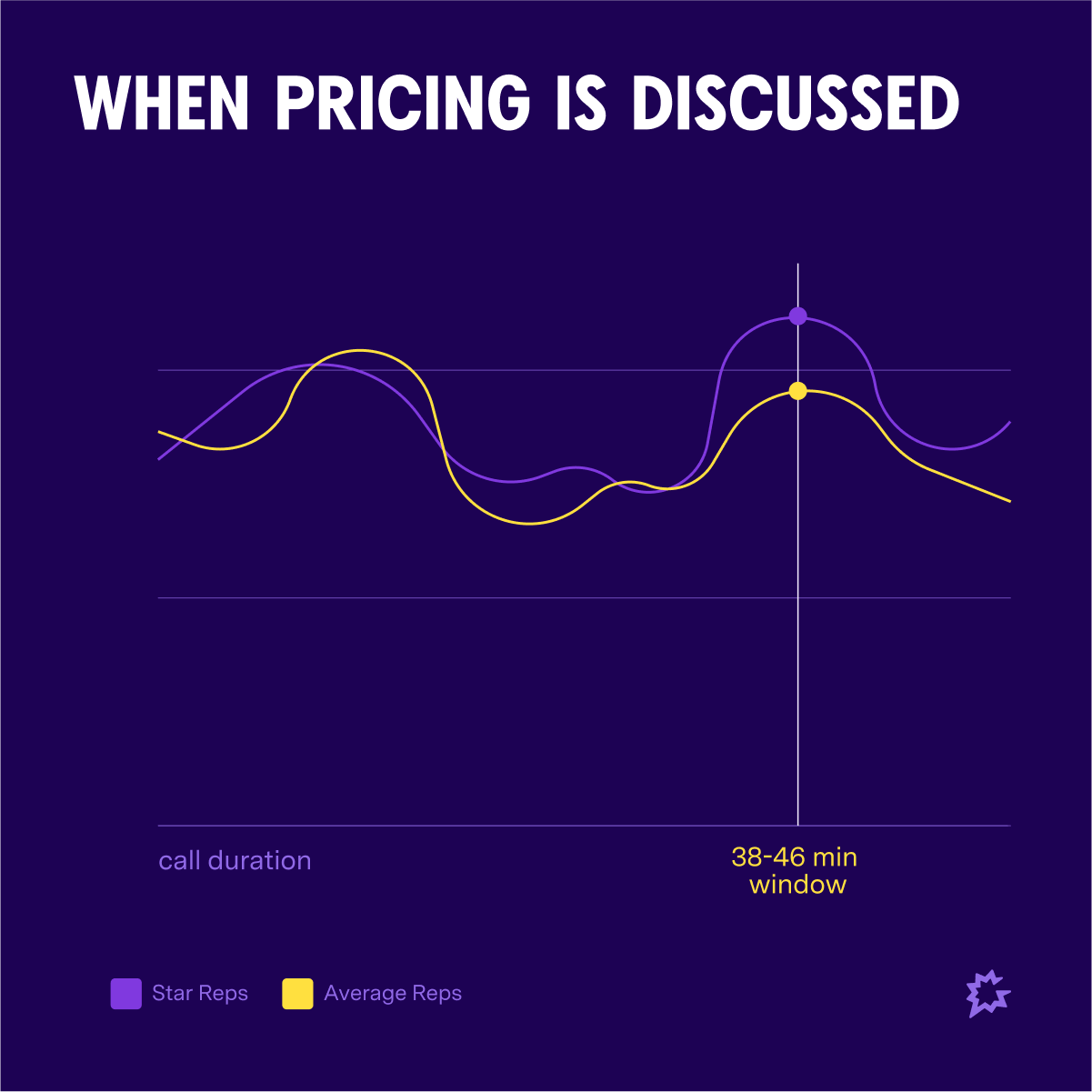
This makes sense. Waiting until you’ve established the value of your solution usually leads to more favorable terms.
(Not sure which other topics impact your win rates? Use Smart Trackers to find out.)
3. Use powerful language during sales conversations
Not all words are created equal. High-performing reps use seven words on call after call, including:
- Imagine: This jumpstarts the prospect’s imagination and increases their desire for the product.
- Successful: Who doesn’t want to succeed at their job or in life? This term is incredibly compelling to potential buyers.
- The prospect’s name: Everyone loves the sound of their own name. It makes them feel important and respected.
- Decisive language: Words like “definitely,” “certainly,” and “we can do that” demonstrate confidence and make the salesperson seem more authoritative.
Risk-reversal language — or statements that put prospects at ease like, “We offer a 30-day no obligation trial” — also improves win rates by 32%.
4. Employ therapist-grade listening skills
The truth is, selling is far more about listening than talking. Top performers boast a 46:54 talk-to-listen ratio, meaning they speak less than 50% of the time. Average performers, by contrast, talk 68% of the time. And low performers speak even more — a mind-numbing 72% of the conversation.

By letting customers speak up more, and not jumping in as soon as they pause, reps discover valuable information, forge stronger connections, and avoid rambling or talking themselves out of a deal.
5. Make your sales conversations feel like you’re in a coffee shop
No one likes feeling interrogated. Especially when they’re trying to evaluate a B2B solution. The data backs this up. Top salespeople engage in back-and-forth conversations rather than throwing question after question at their prospects.

When reps and customers frequently take turns speaking, the chances of a second meeting increase.
6. Discuss the competition early in your sales conversations
This data point might seem counterintuitive. If you discuss the competition early in the sales process (i.e., in the first two stages), the deal is 49% likelier to close than if you never bring up the competition at all.
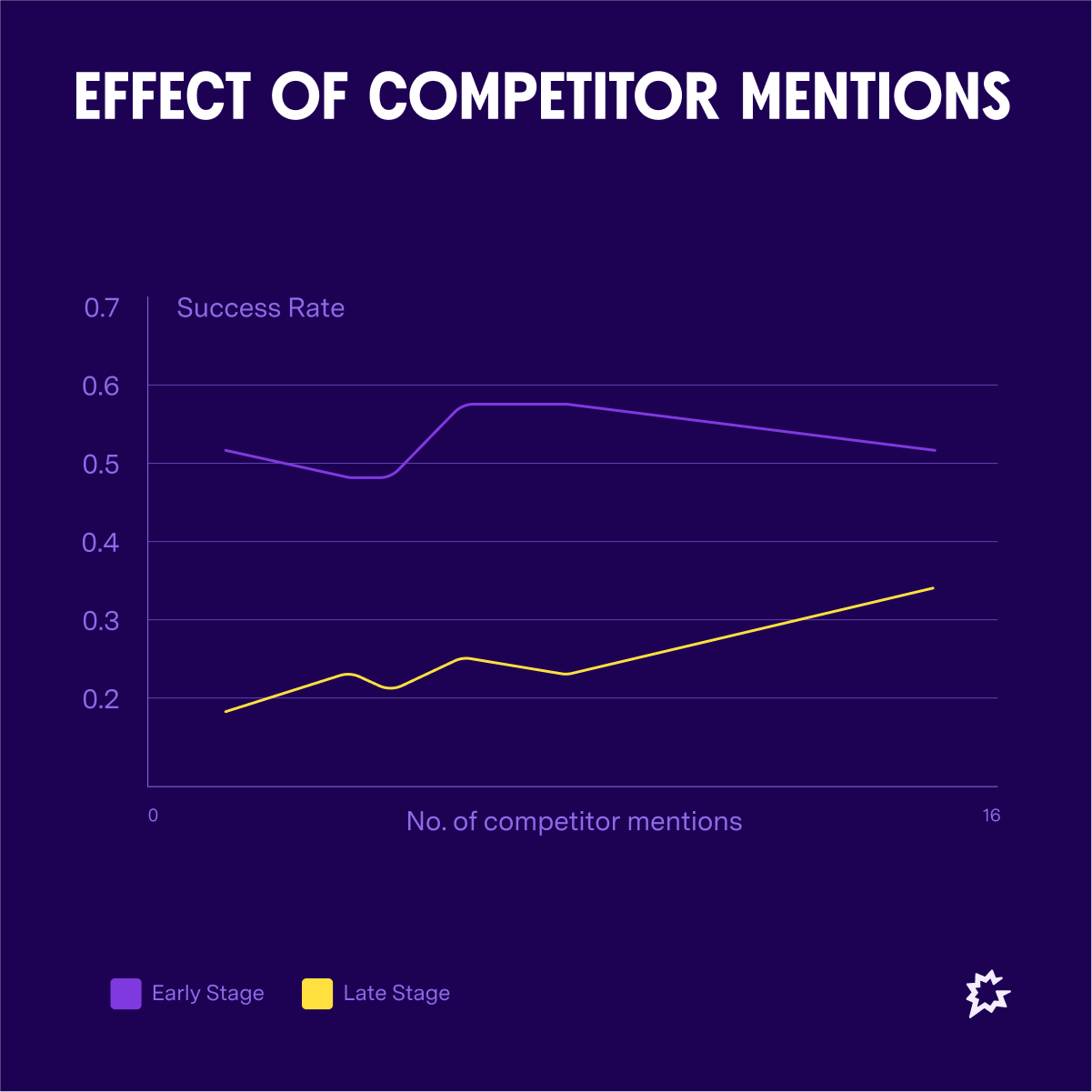
This is because you’ve won the competitive war early on — while the prospect is still forming their conclusions. The opposite effect occurs if the competition comes up in the middle or end of the sales cycle: The odds of closing go down.

That’s why the best salespeople make it a point to ask, “Who else are you considering?” early on, so they can get ahead of their competitors.
7. Team selling improves sales conversations
Lone wolves don’t prosper in sales. Deals that contain even one sales call with multiple participants from the selling organization are 258% more likely to close than deals where the rep flew solo during the entire sales cycle.
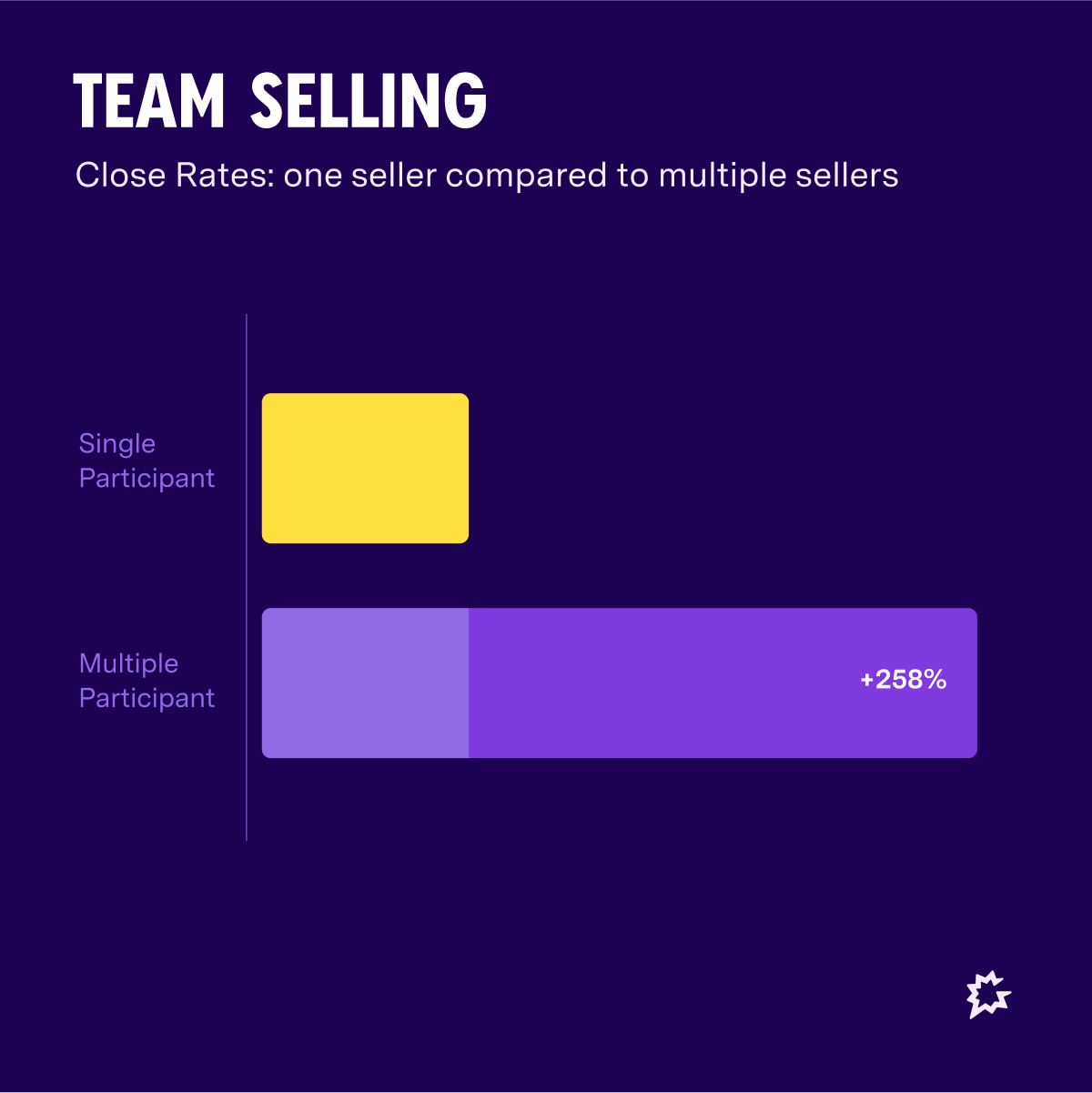
In other words, team selling works. For that reason, top-performing salespeople are in the habit of recruiting their CEO, sales manager, sales engineer, or other relevant stakeholder to join them on their sales calls. After all, this tells the prospect the rep is “all-in” and also lets them deepen their understanding of the product and vendor.
(It’s time to get your entire team into one integrated platform where they can information easily and work on wins together!)
8. Make your sales conversations about business, not features
The reps at the top of the leaderboard spend more time talking about business- and value-related subjects than average performers… a lot more — to the tune of 52% more time.
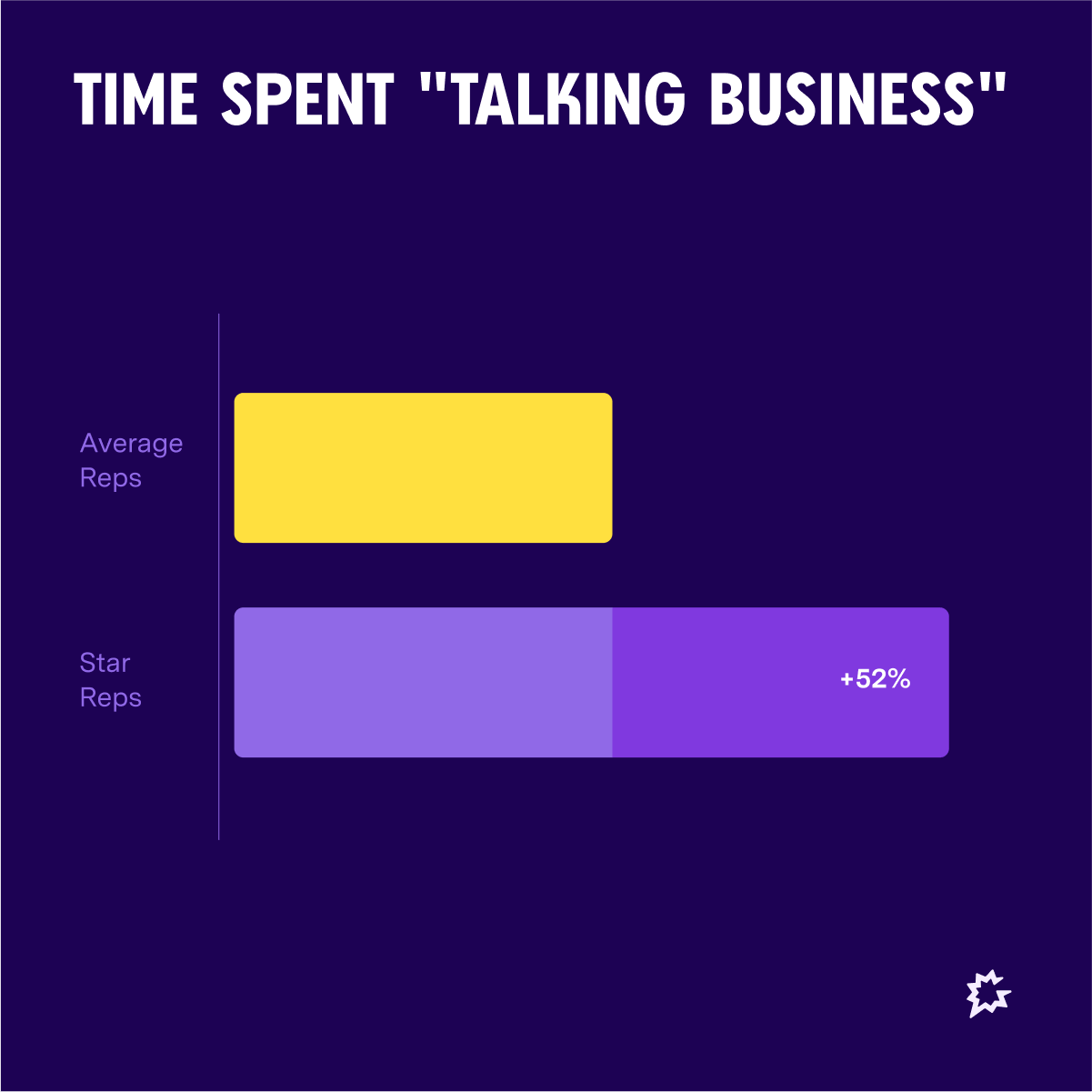
Subjects in this category include ROI, the prospect’s pain points and business environment, timeline and objectives, implementation, and benefits. They also spend 39% less time talking about technical topics and features.

9. Keep your sales demos focused
If your reps are getting a ton of questions during their demos, that’s a very good signal. Top performers get nearly one-third more questions from buyers during product demos than mid-performers.
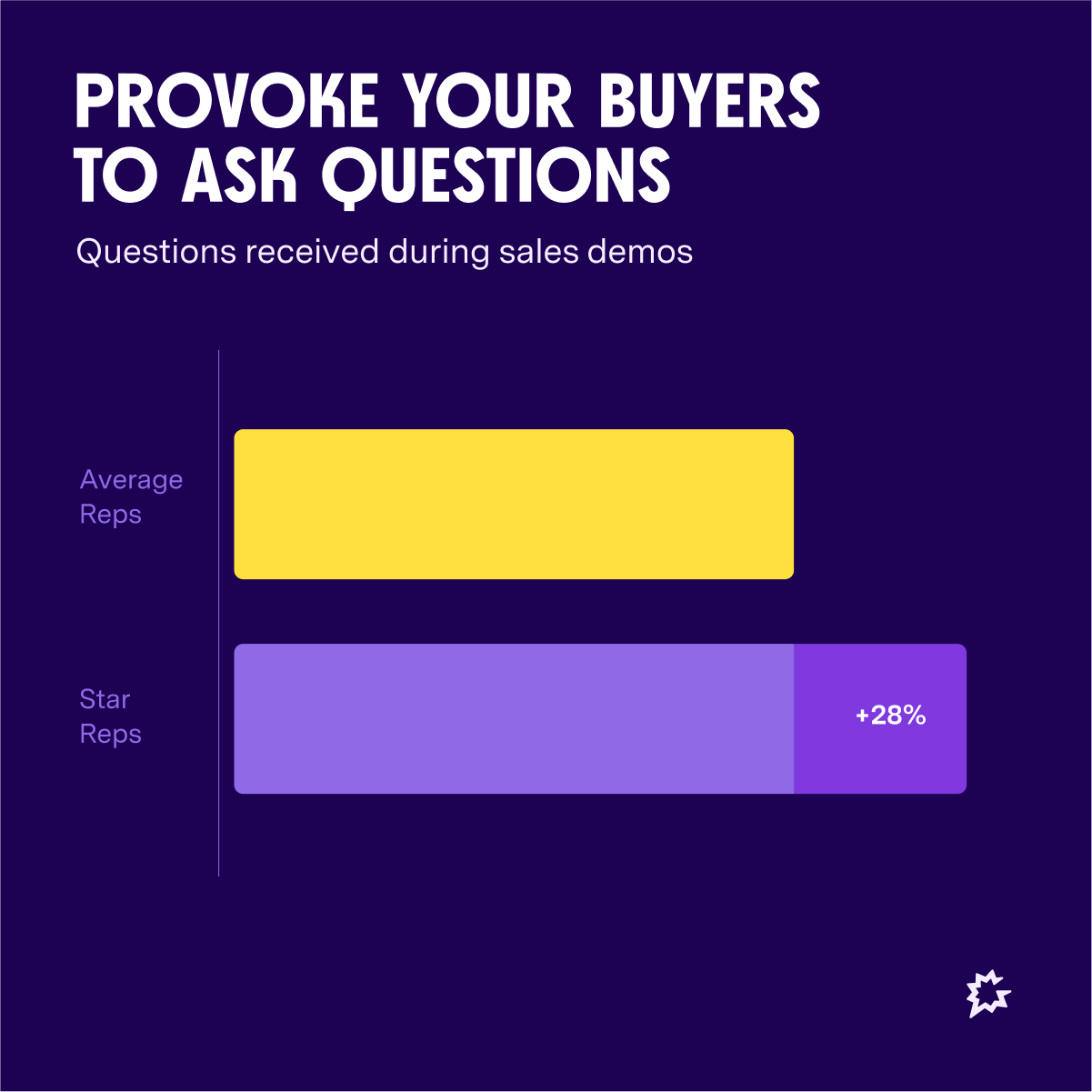
These reps also ask 30% fewer questions of their buyers during demos. Why? They’re giving prospects just enough information to spark their curiosity. Just enough to provoke prospects to ask questions about what they’re interested in, which focuses the conversation and guarantees engagement. This technique lets the best reps keep their demo hyper-focused on topics each buyer cares about.
Ready to test these nine elements for yourself? Make sure your platform provides the advanced data and visibility you need to track and analyze sales conversations. Then look at that data regularly and use automated insights to guide your coaching and help your sales team have more effective sales conversations.
If your platform doesn’t capture the information your team needs to succeed, schedule a demo to learn why Gong is trusted by more than 4,500 customers worldwide.

Content Author
Chris Orlob is the Co-Founder and CEO of Pclub.io, a leading sales training platform designed to help sales professionals accelerate their revenue growth. He is best known for his pivotal role at Gong, where he helped scale the company from $200,000 to $200 million in ARR, contributing to a $7.2 billion valuation. During his tenure at Gong, Chris led the creation of Gong Labs and excelled in various go-to-market roles. Today, through Pclub.io, he leverages his deep expertise in sales and revenue operations to coach over 11,000 SaaS sellers.
Discover more from Gong
Check out the latest product information, executive insights, and selling tips and tricks, all on the Gong blog.
